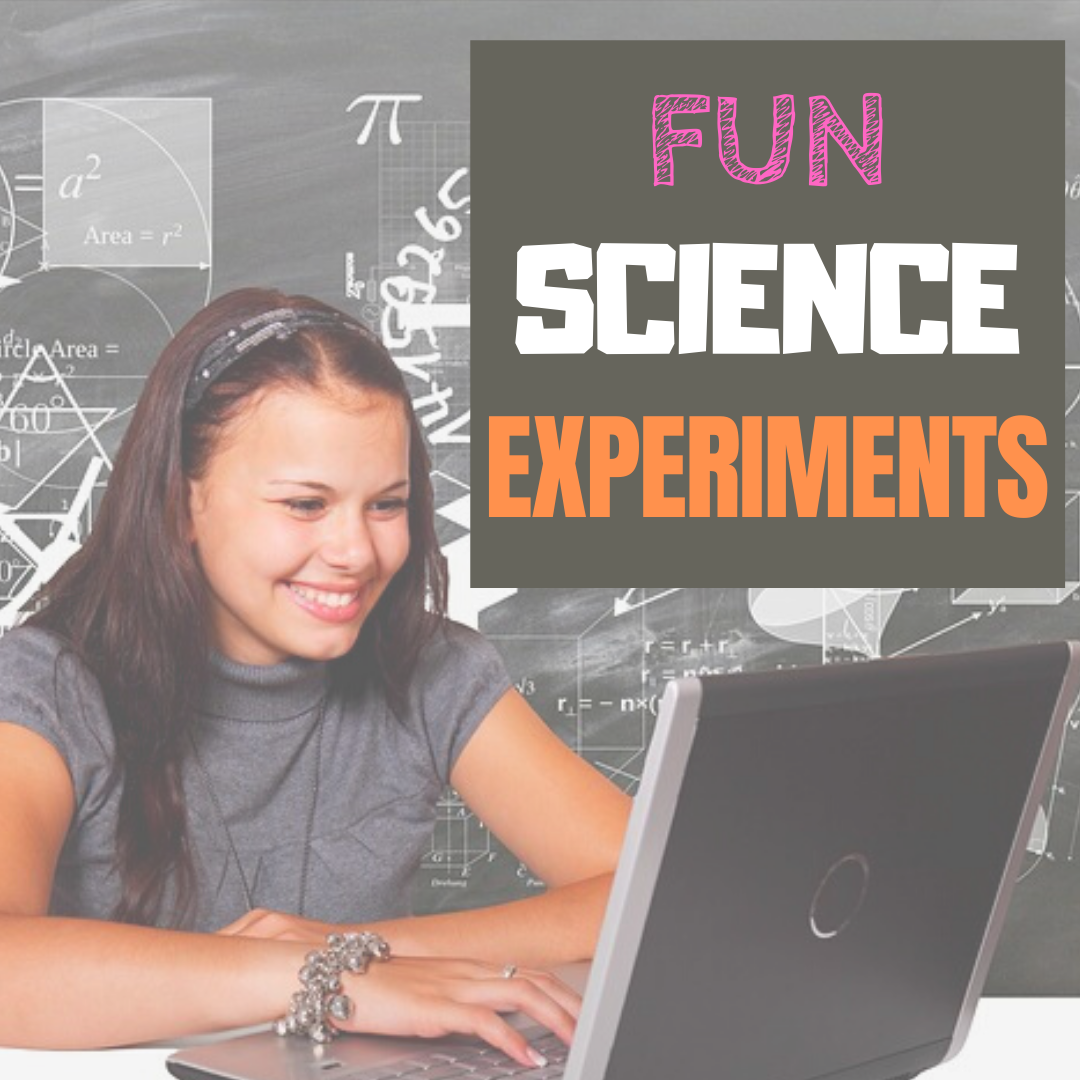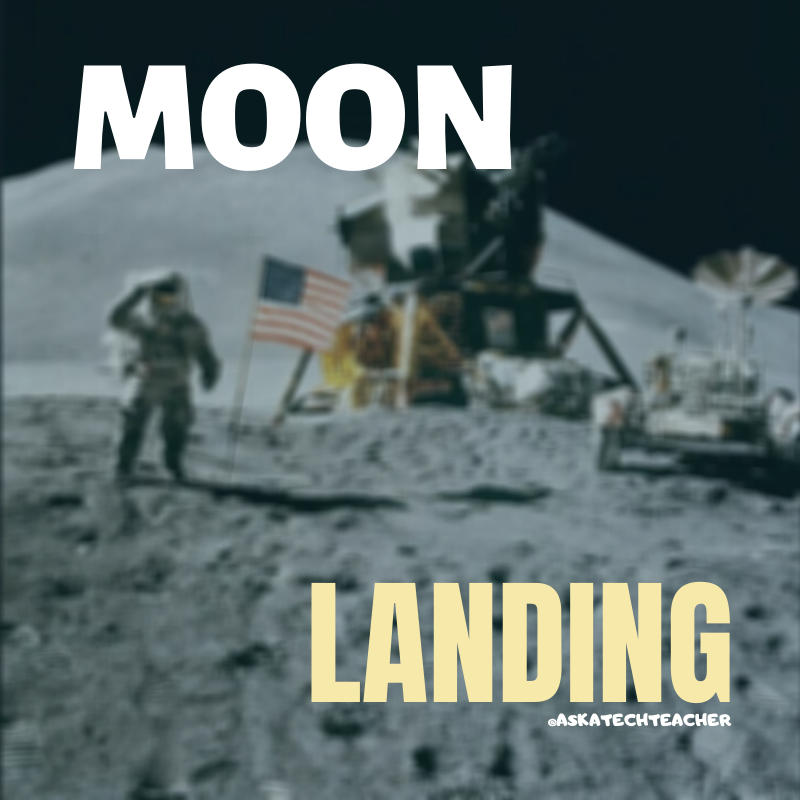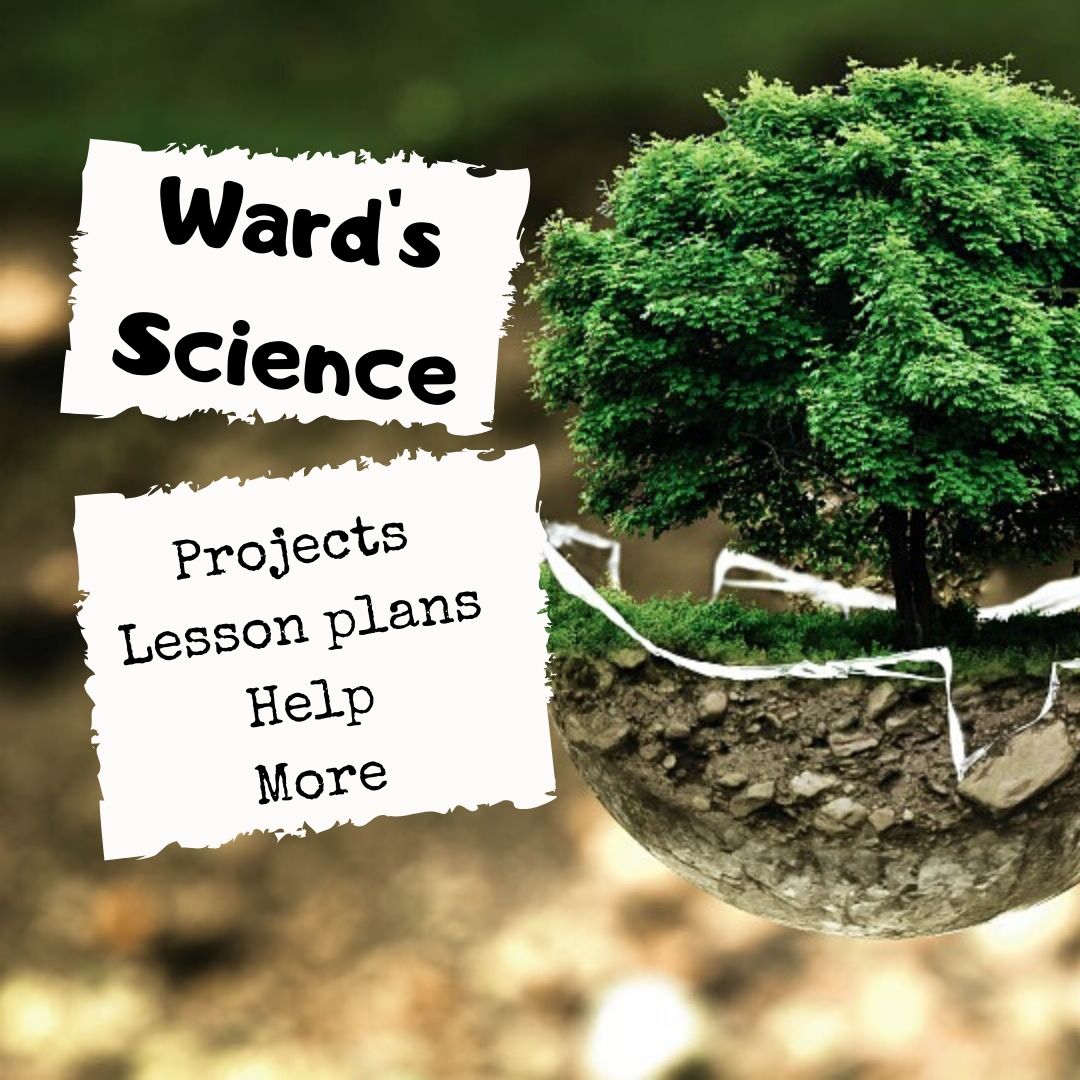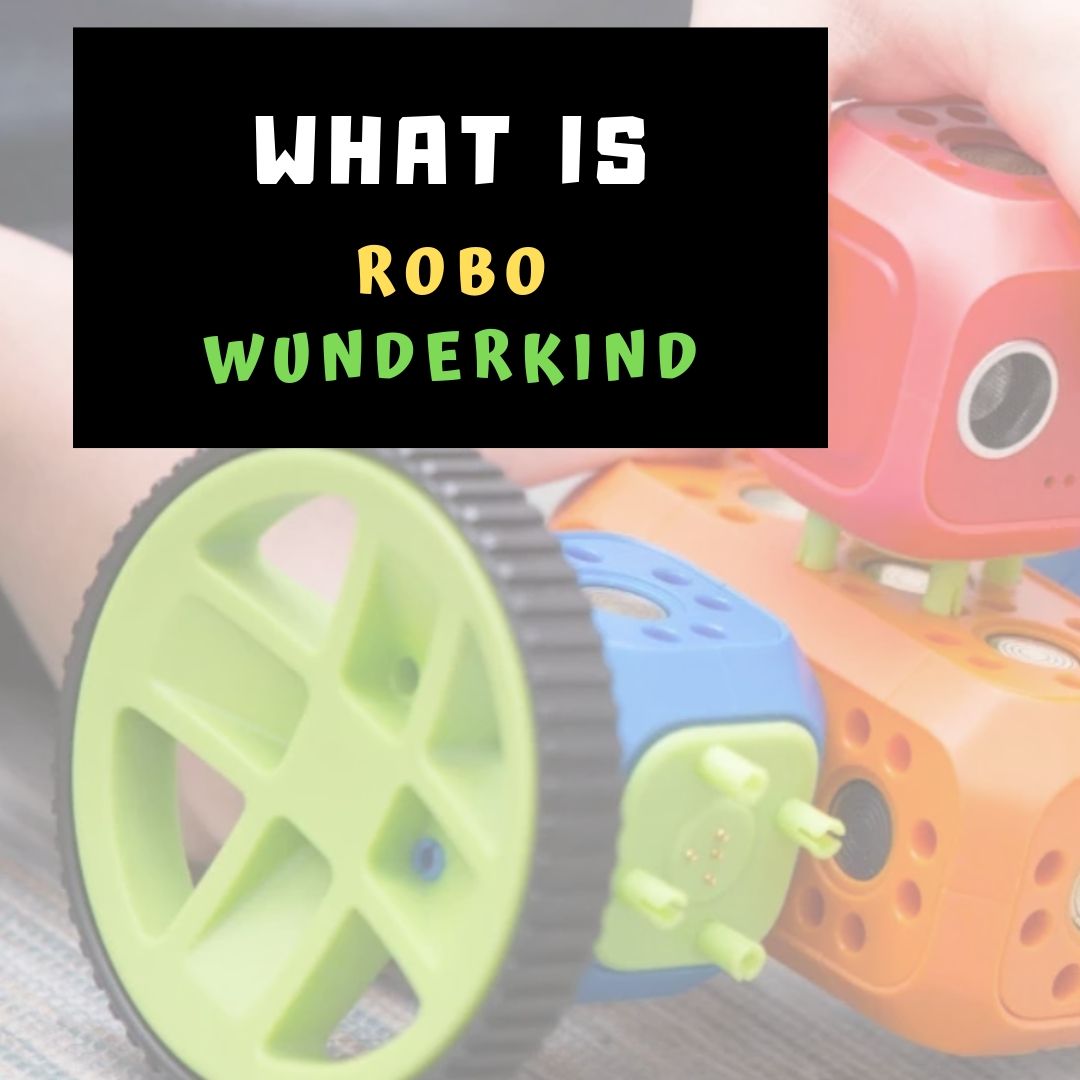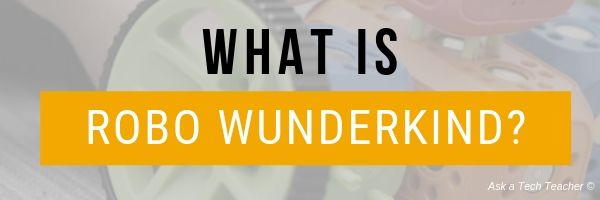Category: Science
17 Websites for Chemistry
Here are a few of the popular resources teachers are using to reinforce chemistry in MS and HS:
- Beaker–a digital beaker app
- Chemistry collection from Carnegie
- ChemCapers
- Chemistry instructional videos
- ChemmyBear–resources for Chemistry and AP Chemistry classes
- CK12 Chemistry simulations
- Concord Consortium–chemistry, earth science, engineering, life science, physics
- Crash Course: Chemistry (videos)
- EMD PTE — periodic table
- Interactive Periodic Table
- Molecules–Molecules is an application for viewing three-dimensional renderings of molecules and manipulating them using your fingers.
- NanoSpace Molecularium–virtual amusement park about atoms and molecules; from Rensselaer Polytechnic Institute
- Periodic Table of Elements–interactive
- Periodic Table videos
- PhET Simulations for chemistry and physics
- Reactions–short videos on chemistry topics
- Slow Motion Chemistry — videos on chemistry
Click here for updates to this list.
Share this:
We Landed on the Moon July 20 1969
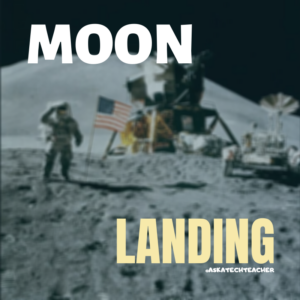 On July 20, 1969, Neil Armstrong was the first man to place foot on the moon. Commemorate that this year with an exciting collection of websites and apps that take your students to the Moon. Here are some you’ll like:
On July 20, 1969, Neil Armstrong was the first man to place foot on the moon. Commemorate that this year with an exciting collection of websites and apps that take your students to the Moon. Here are some you’ll like:
- Apollo 11: Countdown to Launch via Google Earth
- Apollo 11 VR
- Google Moon–see the Moon in 3D with your Google Earth app
- How we are going to the Moon–video
- JFK Challenge — takes kids to the Apollo 11
- NASA Educator Guide to the Moon (for teachers)
- Moon Phase Simulation Viewed from Earth and Space (interactive, elementary and middle school)—and associated Lesson Plan
- Observing the Moon in the Sky (interactive, elementary)
- Moonrise to Moonset (media gallery, elementary)
More on space
In Love with Space? Here are Great Websites to Take You There
10 Space Websites That Will Launch Your Class Study
Jacqui Murray has been teaching K-18 technology for 30 years. She is the editor/author of over a hundred tech ed resources including a K-12 technology curriculum, K-8 keyboard curriculum, K-8 Digital Citizenship curriculum. She is an adjunct professor in tech ed, Master Teacher, webmaster for four blogs, an Amazon Vine Voice, CSTA presentation reviewer, freelance journalist on tech ed topics, contributor to NEA Today, and author of the tech thrillers, To Hunt a Sub and Twenty-four Days. You can find her resources at Structured Learning.
Share this:
5 Fun Science Experiments Kids Do at Home
Getting ready for extra time with kids? Here are five great ideas that are energizing and motivating:
5 Fun Science Experiments Kids Can Do at Home
 All children are born scientists. Until education – or spoilsport parents – ruins them.
All children are born scientists. Until education – or spoilsport parents – ruins them.
Kids have a natural curiosity that is insatiable due to their innate ability to get to the bottom of anything they set their minds on. Be it blowing soap bubbles or building towers of spaghetti, they are second only to seasoned engineers and CEOs at getting results.
However, over the past few months, kids have largely been cooped up at home due to the impact of COVID-19; the lack of access to a tried-and-true schooling process and resources will result in young children missing out on foundational concepts in literature, math and science that prepare them for a lifetime of learning and working.
Virtual schooling is clearly not an effective solution, according to a study done by the National Alliance for Public Charter Schools (NAPCS), which looked at schools specifically designed to teach coursework online with significant budgets invested in research and planning. “If they can’t make it work, it seems unlikely that parents and teachers Googling resources will do any better,” said Eric Hanushek, economist and education researcher at Stanford.
Well, don’t let that deter you. As a STEM (Science Technology Engineering Mathematics) learning advocate for kids, I can’t understate the importance of teaching simple scientific and number concepts at home, because science isn’t something you learn only in a classroom. Research shows that kids as young as pre-school or kindergarten age have divergent thinking capabilities. Trying out simple experiments with things found in and around the house can improve their critical reasoning as well as spatial skills, and promote a curiosity-mindset that they’ll carry well into adulthood.
So, here are some fun activities and easy DIY projects to get your kids excited about science. Before you let them dive right in, please make sure all experiments are done under adult supervision.
1 Naked Egg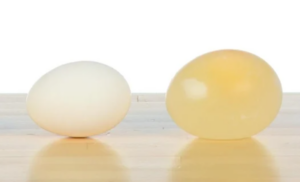
Let’s start with a simple one. Eggs are one of the favorite props in many kiddies’ experiments (and recipes).
What you’ll need:
- 2 eggs
- Water
- Vinegar
- 2 glasses
How to do it:
- Fill one glass – a little more than half – with vinegar and the other with water.
- Dip one egg in each until the eggs are completely submerged.
- Let them soak for 24 hours and remove them the next day.
What happens:
As time passes, you’ll see bubbles form on the surface of the vinegar egg. At the end of 24 hours, you’ll find that the egg that was in the vinegar completely loses its shell and becomes “naked.” It’ll also be significantly larger in size than the one you kept in water.
The science behind it:
This demonstrates a principle called “osmosis.” The vinegar is made up of two parts: acetic acid and water. The acetic acid reacted with the eggshell and dissolved it. The water traveled through the egg’s membrane in such a way that the concentration of water on both sides of the membrane becomes equal. This “flow” is called osmosis.
Great link:
https://www.stevespanglerscience.com/lab/experiments/growing-and-shrinking-egg/
2 Diet Coke Eruption
Warning: This might make your clothes and/or your kitchen messy. So try this outdoors.
What you’ll need:
- A packet of Mentos
- A large bottle of Diet Coke (Soda or any carbonated drink will do as a substitute)
- A test tube or paper roll to hold the Mentos loosely
- A small paper card
How to do it:
- Go out on the yard or the garden and select a place where there isn’t much of anything around for 6 to 8 feet. Place the Diet Coke on a table or on the ground.
- Stack 7 Mentos just like they are in the packing, but in a way they can fall out easily. Use a paper roll or test tube.
- Open the Diet Coke slowly so that it doesn’t fizz out.
- Cover the test tube with a little paper card and invert it over the mouth of the bottle.
- Pull out the paper card, letting the Mentos fall into the bottle quickly.
- Move back quickly from the bottle without turning your back to it (or else you’ll miss the sight).
What happens:
https://www.youtube.com/watch?v=rlSMNQ5K51
The Diet Coke blasts up in a sky high – okay, not-so-high – explosion. But it’s a veritable fountain of the sticky stuff.
The science behind it:
The carbon dioxide (CO2) in the soda is what makes it bubbly. It’s mixed into the fizzy drink when they make it at the factory. Diet Coke rises higher probably because of some of its ingredients, and it is less sticky because of whatever sugar substitute it uses.
Now, the CO2 isn’t released from the drink until you pour it, or shake the bottle, or let it lie for a lot of days. It’s just waiting – raring, rather – to escape in the form of bubbles. Shaking the bottle or dropping something into it breaks the surface tension of the liquid and allows bubbles to form on the surface. Mentos have very tiny pits on them like a golf ball, which means the surface area increases dramatically, making space for a real lot of bubbles to form.
Experiments have proved that 7 to 8 pieces of Mentos are good enough. The world record height of the blast is about 29 feet.
3 Double Color Flower
Magic happens when you combine science and art. The super-creative overlap between STEM and the arts is known as STEAM. Here’s an experiment that falls into this category.
What you’ll need:
- A couple of flowers (preferably white) with a clean and thin but sturdy stem.
- Water
- Food coloring
- 2 glasses or vases
- A knife
How to do it:
- Get a couple of flowers. White flowers such as carnations work best because the color change happens quickly, but you can get daisies, roses or any moderately big flower you can find.
- Fill the glasses with clean water. Add different food coloring to each. Make the colors strong. We use food coloring instead of paint so that the plants get non-toxic water.
- Grown-up help alert! Slit the stem vertically from the bottom in two equal parts the roughly length of the glasses.
- Part the stem carefully and place one half each into the two glasses.
- Place the split flower and glasses in a cool, dry place away from direct sunlight.
What happens:
You will start to see the flower change color in a few hours. It might take anywhere from a day to three for a significant difference in color, depending on the flower you choose, the weather, and the place where you keep it.
The science behind it:
The stem of a plant has tube-like transport tissues called xylem. The water is sucked up the stem and moves to the leaves and flowers, from where it evaporates via little openings called stomata. The evaporation creates pressure for more water to be sucked up through the stem, pretty much like drinking water with a straw. The whole process is called transpiration. The speed of transpiration depends on the temperature, wind, light and humidity.
Great links:
https://redtri.com/simple-science-experiments-with-5-supplies-or-less/slide/4
Science Experiments with Water
Science Activities with Plants
4 Extra Strong Paper Cups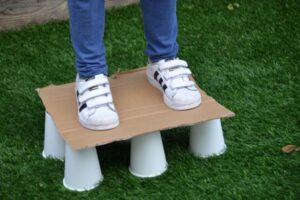
There are loads of things we take for granted in everyday life. The most unassuming of objects can prove otherwise.
What you’ll need:
- 2 dozen paper cups
- 2 sheets of strong cardboard
How to do it:
- Place 2 cups inverted on the floor side by side. Stand with one leg on each and see them get crushed. Just for the fun of it.
- Arrange 12 cups inverted and evenly spaced out in a grid of 4 x 3 on the floor.
- Place a cardboard sheet on top of the grid.
- Kids only please! Gingerly stand on top of the cardboard sheet.
- If it doesn’t break, place another layer of cups and the second cardboard sheet over this layer. Step up on top!
What happens:
The paper cup structure holds up. Likely, the structure with two floors holds up just as well.
What happens:
When you place many cups side by side, your weight is distributed across all of them by the cardboard sheet. Each cup has to bear just a fraction of your weight. The minimum number of cups needed to support your weight depends on the size and quality of the cups and, well, your weight.
Great link:
https://www.science-sparks.com/how-can-you-stand-on-a-paper-cup-without-breaking-it/
5 Oobleck
What state is toothpaste or jelly – solid or liquid? Turns out, they’re colloids. Oobleck is
What you’ll need:
- 2 cups corn starch
- 1 cup water
- Food coloring
How to do it:
- Take water in a bowl.
- Add the food color.
- Add 1.5 cups corn starch to it. Mix with a spoon at first.
- Slowly add the rest of the corn starch. As the consistency of the mixture strengthens, knead with your hands.
What happens:
https://www.youtube.com/watch?v=nw8KaHglokQ
You get a gooey, slimy mixture that was termed “Oobleck” in the Dr. Seuss book Bartholomew and the Oobleck. When you knead the mixture or tap its surface, it feels hard. But when you dip your hand inside slowly, your fingers slide through it as if it’s water. This is exactly how quicksand works.
The science behind it:
Oobleck is a “non-Newtonian” fluid – it acts like a liquid when it’s being poured (this property is called viscosity) and like a solid when a force (in this case, pressure) is acting on it. Some of its properties:
- When you roll Oobleck into a ball, it solidifies. But when you stop moving it, it melts back in your hand.
- It is messy but can be washed away completely with soap and hot water.
- When left in the open for too long, it hardens and turns back into cornstarch.
- It isn’t poisonous, but tastes awful.
- Make enough Oobleck in a large tub or bin and you can walk on it.
Over to You
What do you think of these experiments? Which ones are you going to try right away?
While parents certainly can’t match the school’s resources and expertise in imparting science and technology education to eager little minds, there’s quite a bit we can do to grow the next Einstein (or Musk) at home. If you have a bit of extra space and a stuff lying around, why not try and build a science lab at home for the budding genius?
AUTHOR BIO:
Shreiya Aggarwal-Gupta is the owner of the early education startup Kidpillar, which aims to provide developmental opportunities and resources for young children in the field of STEM (Science Technology Engineering Mathematics) via kid-friendly journals, practical DIY-kits, and simple project-based learnings and workshops. Shreiya is also a passionate blogger, computer science engineer, finance whiz, and “perfect mommy” to her son.
@KidPillar
More science
In Love with Space? Here are Great Websites to Take You There
Ward’s Science–So Many STEM Resources
PASCO Motion Sensor–A Must for Science Classes
Jacqui Murray has been teaching K-18 technology for 30 years. She is the editor/author of over a hundred tech ed resources including a K-12 technology curriculum, K-8 keyboard curriculum, K-8 Digital Citizenship curriculum. She is an adjunct professor in tech ed, Master Teacher, webmaster for four blogs, an Amazon Vine Voice, CSTA presentation reviewer, freelance journalist on tech ed topics, contributor to NEA Today, and author of the tech thrillers, To Hunt a Sub and Twenty-four Days. You can find her resources at Structured Learning.
Share this:
National STEM/STEAM Day Nov. 8th
 National STEM Day is November 8 and the unofficial holiday celebrates science, technology, engineering and mathematics (STEM) education throughout the United States.
National STEM Day is November 8 and the unofficial holiday celebrates science, technology, engineering and mathematics (STEM) education throughout the United States.
Here are some great ideas for celebrating:
Ten Ways to Celebrate National STEM Day with NASA | NASA
National STEM Day is November 8 and the unofficial holiday celebrates science, technology, engineering and mathematics (STEM) education throughout the United States. The day focuses on helping students advance in STEM fields, a priority of NASA as we continue to push the boundaries of exploration and soar into the future. In celebration of National STEM Day, we challenge you to engage and inspire the Artemis generation as we go forward to the Moon by 2024 and continue to innovate in the areas of Earth science and aeronautics. To help you join in on the festivities, here are 10 ways you can celebrate National STEM Day with us.
49 STEM Activities for Students
On November 8th 2019, we will celebrate National STEM Day to get kids excited about Science, Technology, Engineering, and Math (STEM). Together the STEM subjects represent some of the fastest-growing and most in-demand fields in the United States.
While STEM topics seem a natural fit in high schools and post-secondary curriculum, education experts are promoting a focus on STEM subjects for younger and younger children. You might be asking, what will a four or five-year-old student be able to understand about these subjects?
Share this:
We Landed on the Moon July 20 1969
 On July 20, 1969, Neil Armstrong was the first man to place foot on the moon. Commemorate that this year with an exciting collection of websites and apps that take your students to the Moon. Here are some you’ll like:
On July 20, 1969, Neil Armstrong was the first man to place foot on the moon. Commemorate that this year with an exciting collection of websites and apps that take your students to the Moon. Here are some you’ll like:
- Apollo 11: Countdown to Launch via Google Earth
- Apollo 11 VR
- Google Moon–see the Moon in 3D with your Google Earth app
- How we are going to the Moon–video
- JFK Challenge — takes kids to the Apollo 11
- NASA Educator Guide to the Moon (for teachers)
- Moon Phase Simulation Viewed from Earth and Space (interactive, elementary and middle school)—and associated Lesson Plan
- Observing the Moon in the Sky (interactive, elementary)
- Moonrise to Moonset (media gallery, elementary)
More on space
In Love with Space? Here are Great Websites to Take You There
10 Space Websites That Will Launch Your Class Study
Jacqui Murray has been teaching K-18 technology for 30 years. She is the editor/author of over a hundred tech ed resources including a K-12 technology curriculum, K-8 keyboard curriculum, K-8 Digital Citizenship curriculum. She is an adjunct professor in tech ed, Master Teacher, webmaster for four blogs, an Amazon Vine Voice, CSTA presentation reviewer, freelance journalist on tech ed topics, contributor to NEA Today, and author of the tech thrillers, To Hunt a Sub and Twenty-four Days. You can find her resources at Structured Learning.
Share this:
In Love with Space? Here are Great Websites to Take You There
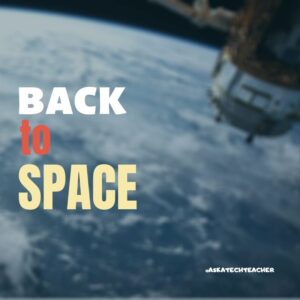 Space units are always exciting. Part of it’s the history, but a lot is that space is our final frontier, a wild untamed land that man knows so little about. Now that Elon Musk’s SpaceX has safely delivered American astronauts to the International Space Station for the first time in almost a decade, the fever of excitement over space couldn’t be higher.
Space units are always exciting. Part of it’s the history, but a lot is that space is our final frontier, a wild untamed land that man knows so little about. Now that Elon Musk’s SpaceX has safely delivered American astronauts to the International Space Station for the first time in almost a decade, the fever of excitement over space couldn’t be higher.
I have a list of over 20 websites I use to support this theme for K-8. Here are five of my favorites:
SpaceX ISS Docking Simulator
This simulator will familiarize users with the controls of the actual interface used by NASA Astronauts to manually pilot the SpaceX Dragon 2 vehicle to the ISS. Successful docking is achieved when all greeen numbers in the center of the interface are below 0.2. Movement in space is slow and requires patience and precision.
This can be played online or as an app through Google Play.
Educational Application
This realistic webtool is an excellent scaffold for MS and HS students connecting STEM to their curiosity and excitement about space. Good applications not only for space but engineering, mechanics, and computer technology.
Cost: Free
Age group: MS and HS
Overall rating: 5/5
Build a Satellite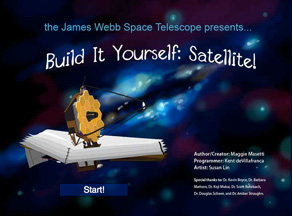
This is an online simulation that challenges students to build a working satellite. They choose what science their satellite will study, select the wavelengths, instruments, and optics that will be required, and then build! After launch, students can learn about a large range of real astronomical missions dating from the 1980s and the data they collected.
The game is a cooperative effort of the James Webb Space Telescope and NASA Goddard Space Flight Center
Educational Applications
To build a satellite, students must understand advanced topics like wavelength and optics, and research scientific areas such as black holes, the Early Universe, and galaxies as they select what their satellite will study. A real interest in telescopes and space science will make this game more meaningful.
Cost: Free
Age group: High school and college
Overall rating: 5/5
Share this:
Stem Education in 2020
A growing focus of schools is STEM. Ask a Tech Teacher contributor, Brianna, has some general observations about STEM education in 2020:
Stem Education in 2020
About two decades ago, the sciences were not so popular among younger generations. People keen on mathematics, physics, or IT were awe-inspiring and seemed to have supernatural abilities. But, the importance of sciences and technologies has grown; that’s why professionals in certain fields have become headhunters’ “targets.” The world’s workforce lacked a lot of science specialists, that is why STEM education became more popular.
So, what is STEM education? STEM is an acronym that stands for science, technology, engineering, and mathematics. These subjects are being taught cross-disciplinary and in a complex which refers to real situations. This approach fosters the motivation of students which tend to make use of essay help service and tutors to have work done. You might think that there can be nothing new about STEM education in K-12 and higher education. Still, there are several facts you may want to know about.
The Role of Technology
The essential component in 2020 is a T-part of STEM – Technology. It is not only an object of education but a necessary and irreplaceable means of teaching STEM as well. For several years now, we observe a rapid growth of online and remote teaching, learning, and even practicing. Education in various disciplines has undergone significant change with the introduction of VR and AR into the classrooms. Now it is possible to create virtual reality and virtual laboratories for students to practice in. And this is only a small part of the technologies’ influence on modern life and education.
Grants and New Opportunities
Currently, numerous STEM courses and grants are launching in many universities and organizations. Moreover, famous corporations and brands are funding them, making it possible for students with limited financial possibilities to get quality education free of charge. Such examples are Ford Motor, Toyota Foundation, and Toshiba. They offer grants not only to students of higher education institutions but at a school level too. The NEA Foundation also promotes grants and projects to underserved communities that do not have access to a quality education process and resources.
Share this:
Ward’s Science–So Many STEM Resources
 One of the most difficult skills to teach in school is problem solving. I can’t tell you how many kids–and parents–ask me, “How do I get an A.” My answer: “By thinking,” which oddly confuses them. We talk about what that means–problem solving, critical analysis, logical thinking–but often, that sounds hard to them–too hard. They want an easier way.
One of the most difficult skills to teach in school is problem solving. I can’t tell you how many kids–and parents–ask me, “How do I get an A.” My answer: “By thinking,” which oddly confuses them. We talk about what that means–problem solving, critical analysis, logical thinking–but often, that sounds hard to them–too hard. They want an easier way.
Why is that?
Basically, it’s because there aren’t enough education opportunities that require that sort of skill and those there are, usually rhyme with ‘math’ or ‘science’ which to many kids are “just too complicated”.
Enter STEM–Science, Technology, Engineering, and Mathematics.
“I don’t think schools can manage without coding and STEM. In Finland, we have had coding in the curriculum starting in the first grade; it is not taught separately, but through the thinking of various subjects.” –Anneli Rautiainen, Head of Innovation Unit at Finnish National Agency for Education
Coding, robotics, and experimentation–integral pieces of STEM–give students the best start possible to the rest of their lives. They are a toolkit of life skills such as problem-solving, coding and thinking. 93% of teachers (in America) believe these sorts of thinking skills in K-12 are critical.
Nothing promotes these better than STEM. Done right, STEM turns the confusing part of ‘thinking’ into fun. I found a partner in my STEM projects. It’s called Ward’s Science.
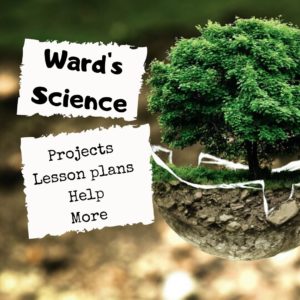 Who is Ward’s Science
Who is Ward’s Science
Even after 144 years, Ward’s Science continues to be a leading provider of a full range of science products, kits, and resources for AP Science, Biology, Chemistry, Digital Science, Earth Science, Physics, and more for elementary-age students through High School (and beyond)–including Makerspace environments. Ward’s Science is known to its customers and the industry as the complete solution for materials supporting classroom science subjects. They not only offer project supplies but lesson plans, curricula, how-to videos, tips and tricks, personalized help, and podcasts. They even offer interesting extras like “How to choose a 3D printer”, “Connecting your Makerspace to your curriculum”, and “How to get funding for a robotics program”. Curricula are aligned with NGSS, TEKS, and other states and many of the kits are officially licensed by Science Olympiad. They even offer grant services to support school science programs.
What I really like about Ward’s Science
Ward’s Science makes it easy to find engaging, age-appropriate STEM resources, even if you aren’t quite sure what you want. The website is clean, simple to maneuver, and easy to understand. You type in what you’re looking for and get options. No ads. No animations. Just content.
Some services I didn’t expect and that would be difficult to find in other stores–virtual or physical–are:
Share this:
Looking for a Class Robot? Try Robo Wunderkind
There are a lot of options if you want to bring programmable robots to your classroom. One I discovered this summer and have fallen in love with is Sunburst’s Robo Wunderkind. It is a build-a-robot kit designed to introduce children ages six and up to coding and robotics as well as the fun of problem-solving and creative thinking. The robot starts in about thirty pieces (there are so many, I didn’t really count them). You don’t use all of them in one robot, just pick those that will make your robot do what you want. The completed robot can move around on wheels, make sounds, light up like a flashlight, sense distance and movement, twist and turn, follow a maze, or whatever else your imagination can conjure up.
But don’t be confused. The goal of this kit is as much about building the robot as having fun exploring, experimenting, and tinkering.
What is Robo Wunderkind
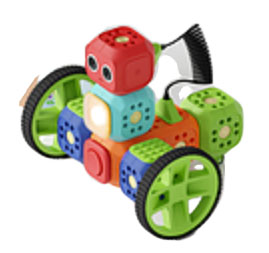 Robo Wunderkind is an award-winning robotics kit that lets young children build an interactive robot and then program it to do what they want. It can be used at home, in school, or as an extracurricular tool for teaching STEAM disciplines (science, technology, engineering, art, and math). The box includes a bunch of color-coded parts, a few instructions, and a whole lot of excitement. The builder’s job is to connect the pieces into the robot of their dreams, program it to do what they need, and then start over.
Robo Wunderkind is an award-winning robotics kit that lets young children build an interactive robot and then program it to do what they want. It can be used at home, in school, or as an extracurricular tool for teaching STEAM disciplines (science, technology, engineering, art, and math). The box includes a bunch of color-coded parts, a few instructions, and a whole lot of excitement. The builder’s job is to connect the pieces into the robot of their dreams, program it to do what they need, and then start over.
Fair warning: This robot doesn’t look like the famous humanoid robots of literature–C3PO or Marvin the Paranoid Android (from The Hitchhiker’s Guide to the Galaxy), with arms, legs, and a head. It’s more like something you might construct from Lego Mindstorm though easier to set up, build, program, operate, and decode. I’ve used both and hands down would start my younger students with Robo Wunderkind. I agree with Tech Crunch when they say:
“You won’t build a robot as sophisticated as a robot built using Lego Mindstorms. But Robo Wunderkind seems more accessible and a good way to try robotics before switching to Arduino and Raspberry Pi when your kid grows up.
How to get started
If I were to rate myself with robotics, I might be closer to a 5 than a 10. I approach the task of building my own with a small degree of trepidation. I tell you this because, if I can build a robot with this system, any six-year-old (and up) can.
Share this:
Engineers Week — A Must for High School
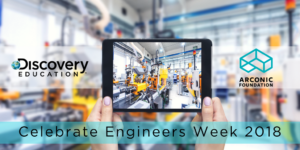 Next week, February 17-23, 2019, is DiscoverE’s Engineers Week. Their tagline:
Next week, February 17-23, 2019, is DiscoverE’s Engineers Week. Their tagline:
“A week-long event, a year-long commitment”
Do you wonder why anyone would be passionate about engineering? Forbes published three good reasons:
- The U.S. has approximately 1.6 million engineering jobs that pay $42 per hour in median.
- Job growth from 2010 to 2014 was in the double digits in several engineering occupations.
- Since 2007, the number of engineering grads nationwide has shot up 33%.
What is Engineers Week?
For those not familiar with DiscoverE, sponsors of Engineers Week, they are a volunteer-driven online coalition of over one-hundred organizations committed to promoting engineering to the K-16 community. This includes the provision of resources, programs, in-person presentations, classroom assistance, training, activities, videos, books, technology programs, and more. The purpose of Engineers Week is as much to celebrate engineers as to increase public dialogue, in that way bringing them to life for kids, educators, and parents. With the national call for STEM resources and the popularity of programs such as Hour of Code, the talented professionals of DiscoverE are more in-demand than ever.
“93% of DiscoverE educators think an engineer’s presence helps STEM students.”




